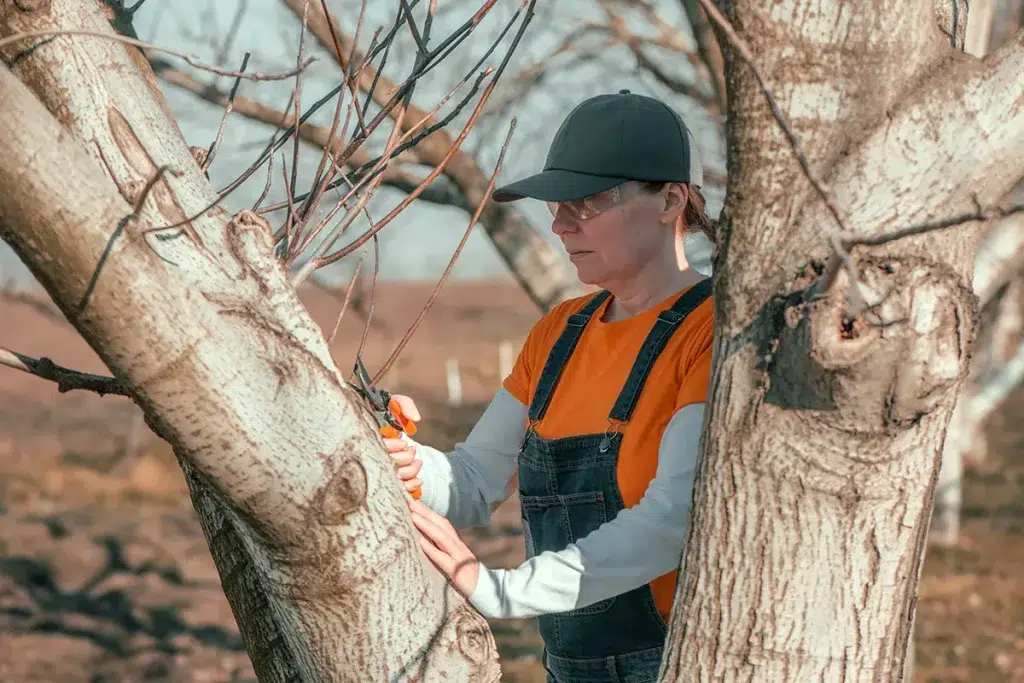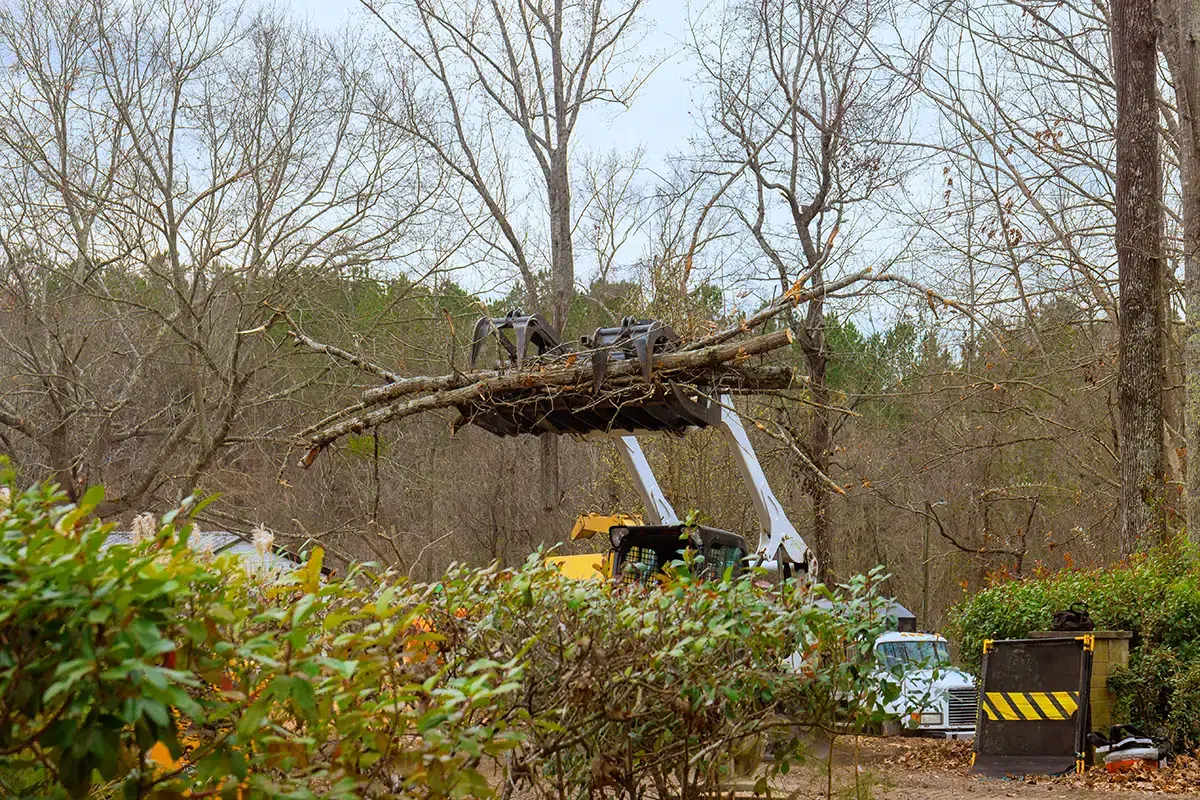Trees are among the most valuable natural assets on your property. They provide shade, support biodiversity, increase property value, and offer a sense of beauty and permanence. But when a tree starts showing signs of decline—whether it’s dropping limbs, leaning, or just looking unwell—many homeowners face a difficult question:
Does this tree need to be removed, or can it be saved with proper pruning?
At Horhut Tree Experts, we’ve been helping Pittsburgh-area homeowners make smart, informed decisions about their trees for decades. As ISA Certified Arborists, we approach every tree with a trained eye, a scientific mindset, and a commitment to safety and stewardship.
This blog will help you understand the key differences between tree pruning and tree removal, how to spot signs that indicate which service is needed, and why working with a qualified arborist is critical to protecting your trees—and your property.
Tree Pruning vs. Tree Removal: What’s the Difference?
Let’s start with the basics.
Tree Pruning
Pruning is the selective removal of certain branches to improve a tree’s health, structure, and safety. Pruning is a proactive, preventative practice that can help:
- Eliminate dead, dying, or diseased limbs
- Improve air flow and light penetration through the canopy
- Reduce risk of limb failure during storms
- Maintain clearance from homes, walkways, and power lines
- Encourage strong, balanced growth
In short, pruning preserves. It’s ideal for trees that are healthy or recoverable and just need expert shaping and care.
Tree Removal
Tree removal involves the complete takedown and disposal of a tree—often for safety, space, or construction reasons. While removal is always a last resort at Horhut Tree Experts, it becomes necessary when:
- The tree is structurally unsound
- Disease or pests have caused irreversible decline
- The tree poses a hazard to people or property
- The tree is interfering with infrastructure and cannot be preserved
- Site plans call for grading, excavation, or building in the tree’s footprint
When a tree becomes a liability, removal may be the only responsible choice.
Signs Your Tree May Just Need Pruning
Not every declining or overgrown tree needs to be removed. Many common issues can be addressed through proper pruning—especially when done by a skilled, ISA Certified Arborist.
Here are common signs your tree likely just needs pruning:
Deadwood in the Canopy
Every mature tree accumulates some dead branches over time. Removing them improves both safety and aesthetics.
Overgrown or Low-Hanging Branches
Branches growing too close to your roof, siding, driveway, or walkways can typically be trimmed without compromising the tree.
Crowded Canopy
When the interior of a tree becomes too dense, it restricts airflow and sunlight, making it vulnerable to fungal issues. Selective thinning helps restore balance.
Storm Damage to Outer Limbs
If wind, snow, or ice caused limb damage but the trunk and root system are intact, corrective pruning can often save the tree.
Minor Lean
Some trees lean slightly due to phototropism (growing toward the sun) and may just need structural pruning or cabling—not removal.

Signs Your Tree May Need to Be Removed
While we always explore every preservation option first, some trees are simply too damaged or dangerous to remain in place.
Watch for these red flags:
A Hollow or Decaying Trunk
If more than one-third of a trunk is hollow or soft due to decay, structural failure is a serious risk.
Fungal Conks or Rot at the Base
Mushrooms or bracket fungi at the base of the trunk often signal internal rot. Root decay is especially dangerous and invisible until late-stage failure.
Large Cracks, Splits, or Co-Dominant Stems
Poor branch attachment, especially “V-shaped” crotches, are more prone to failure in high winds.
Heaving Soil or Exposed Roots
Roots pulling out of the soil or cracking sidewalks may signal root plate instability, making the tree a hazard.
Frequent Limb Drop
If a tree regularly sheds large branches without wind, it may be in decline—even if the leaves still appear green.
Sudden Lean or Ground Movement
A tree that begins leaning unexpectedly, especially after heavy rain or wind, could be preparing to fall. This is a critical situation requiring immediate assessment.
Common Misconceptions: “It Still Has Green Leaves, So It’s Fine”
One of the most dangerous assumptions homeowners make is that a tree is healthy simply because it’s still leafing out. In reality, many trees can look green and still be in structural decline.
Why? Trees prioritize survival. They’ll often push out leaves even while suffering from internal decay or root rot.
A professional tree risk assessment looks beyond the canopy—into the trunk, branches, root zone, and surrounding soil to understand the full picture.
Alternatives to Removal: Advanced Tree Care Options
At Horhut Tree Experts, we don’t remove trees unless it’s truly necessary. In many cases, advanced arboricultural techniques can extend a tree’s life and preserve its safety.
These include:
Cabling and Bracing
Installing flexible steel support cables between limbs can reduce the risk of breakage in weak-wooded species like silver maple or Bradford pear.
Critical Root Zone (CRZ) Enhancement
Through radial trenching, vertical mulching, and soil amendment, we can reverse root compaction and improve nutrient uptake.
Lightning Protection Systems
For high-value or heritage trees, we can install copper lightning protection systems that safely ground electrical strikes.
Disease and Pest Management
Systemic injections, dormant oil sprays, and cultural improvements can often reverse decline from pests like emerald ash borer or scale.
If there’s a way to preserve a tree safely, we’ll find it.
Why You Should Never DIY Tree Pruning or Removal
Tree work is dangerous. According to the Tree Care Industry Association, tree pruning and removal consistently rank among the most hazardous occupations in the United States.
DIY pruning can cause:
- Unintentional damage to the tree (leading to decline or instability)
- Injury from chainsaws, ladders, or falling limbs
- Exposure to power lines or unstable branches
- Legal liability if a falling branch damages property or injures someone
That’s why professional credentials matter.
How Horhut Tree Experts Makes the Call
When you contact us for a consultation, we follow a rigorous diagnostic process that includes:
- A full visual inspection of canopy, trunk, and root zone
- Assessment of tree species, age, and site conditions
- Use of ISA tree risk assessment standards (Level 1–3 evaluations)
- Consideration of tree history, storm damage, and past pruning
- Soil testing and CRZ analysis when necessary
- Transparent, science-based recommendations—never guesswork
We are fully insured, safety-certified under ANSI Z133, and deeply familiar with Pittsburgh’s tree species, soils, and weather patterns.
Our goal is not to sell a service—it’s to help you understand your tree and make the right decision for its future.
Local Insight: Common Pittsburgh Trees We Assess for Pruning or Removal
Our certified arborists are experts in the tree species common across Allegheny County and surrounding areas. Here are a few we commonly assess:
- Norway Maples: Often overgrown with weak branch structures—pruning is essential
- Pin Oaks: Susceptible to iron chlorosis; often misdiagnosed
- Bradford Pears: Prone to storm failure—frequently removed for safety
- Hemlocks: Need careful pruning to manage woolly adelgid infestations
- Ash Trees: Often affected by emerald ash borer—removal is sometimes unavoidable, but early treatment can help
Knowing the species and its unique vulnerabilities helps us make smarter, more customized recommendations.
Still Unsure? Here’s What to Do Next
If you’re standing beneath a tree wondering, “Is this thing safe?”, it’s time to get a professional opinion. Early intervention can prevent accidents, save money, and extend the life of your trees.
Call Horhut Tree Experts for a Tree Risk Assessment
We provide honest, expert evaluations from ISA Certified Arborists—not salespeople. Whether your tree needs pruning, advanced treatment, or removal, you’ll get clear answers backed by science and decades of experience.
Serving Pittsburgh and surrounding areas including Mt. Lebanon, Upper St. Clair, Fox Chapel, and Sewickley.
Fully insured. Safety-first. Family-owned. Trusted by homeowners and commercial clients alike.
Don’t wait for a storm to make the decision for you.
Contact Horhut Tree Experts today to schedule your consultation.

